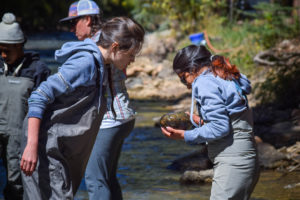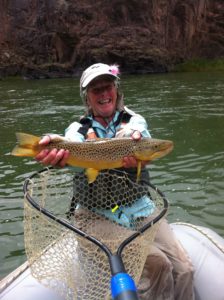As TU leaders, we recognize the importance of diversity among our membership - not just in the sense of racial or gender identity (both are important, of course), but age, financial status, social, education, and ability as well. Sometimes it can be difficult to find creative ways of bringing new folks in the door, but the Grand Valley Anglers Chapter of TU is determined to "think outside of the flybox". Their story of engaging new audiences (including First Responders) is below: "Thinking Outside of the Flybox"
By: Ben Bloodworth, President, Grand Valley Angers TU
If you have been involved with Trout Unlimited for very long, then you have probably noticed that the faces around you don’t change very much - and they likely often bear a striking resemblance to your own. Nationwide, TU is struggling not only to increase and sustain membership, but to expand that membership to include a more diverse community (whether that means racial, social, gender, age, or financial diversity). So, we in Grand Valley Anglers (Grand Junction Chapter #319) have been trying some new ideas that have been paying off.
While fly fishing films like F3T and IF4 (if you don’t know those acronyms, I recommend looking them up and becoming familiar with them) are a great way to reach new and often younger audiences, we took it a step further. We worked with the local fly shop (Western Anglers) to initiate the West Slope’s first ever Iron Fly series.

If you are unfamiliar with Iron Fly, it is an event where tiers sign up to compete in various rounds of fly tying. They are all given the same set of “ingredients” and are challenged to tie the best fly possible in a certain amount of time. While the materials they are given are typically non-traditional and demanding of creative thought, there are also additional stumbling blocks thrown into the mix (like tying blindfolded, with one hand, or using another person’s vise) that demand the tiers’ utmost attention. All this happens with a lively audience, prizes and door-prizes between rounds, and the occasional adult beverage.
We have been having these events during the winter for a couple of years now and they have attracted as many as 80 folks in a night, and gotten our mission and information about other Chapter events/activities to an entirely new and engaged crowd. Of course blowing it up on social media (Instagram and Facebook in particular) also plays a huge part in drawing in the younger crew.

And from a completely different perspective, we started using our summer picnics as opportunities to reach a different group. At various times we invite certain target groups to our summer picnics to not only enjoy some tasty burgers (GVA provides) and potluck-style sides, but an opportunity to learn to cast a fly rod. We have used these opportunities for veterans and women, but last year worked with the local law enforcement community (starting months in advance) to give police officers and their families a chance to cast a rod and learn about who we are. At last summer’s event we had almost two-dozen police-affiliated attendees, and many more GVA members than usual, and had a great time casting into hula-hoops at a local State Park. We received great feedback after the event from both participating officers (one who was learning to cast in full uniform) and our Chapter members. We are planning to expand this concept in the future to fire departments, teachers, and hospital staff, taking the opportunity to not only get new folks involved in TU, but to let these dedicated members of our community know that we appreciate all they do for us on a daily basis.
This fall we are holding our first ever women’s fly fishing day at a local winery in Palisade, Colorado. This entirely women-led event will combine new ladies’ thirst for fly fishing knowledge and know-how with their thirst for some tasty Colorado wine. Carlson Vineyards (who also donates wine for our film events) is graciously hosting this event of wine tasting and learning about all things fly fishing, including TU. And, in an aim to not only help attendees but hopefully involve them more with TU moving forward, we are holding a separate casting-day for any attendees who wish to come out and work more with Chapter members. The only negative feedback we have gotten thus far is from men who want to get free wine while talking fly fishing!
Stay tuned to reports from Corinne Doctor (heading up the CTU Diversity Initiative) in the future to hear how this and other CTU diversification events around the state are going.
If you have any questions about the logistics involved in some of these ventures, or have something that your Chapter is doing that could benefit GVA members, please shoot me an email at grandvalleyanglers319@gmail.com.


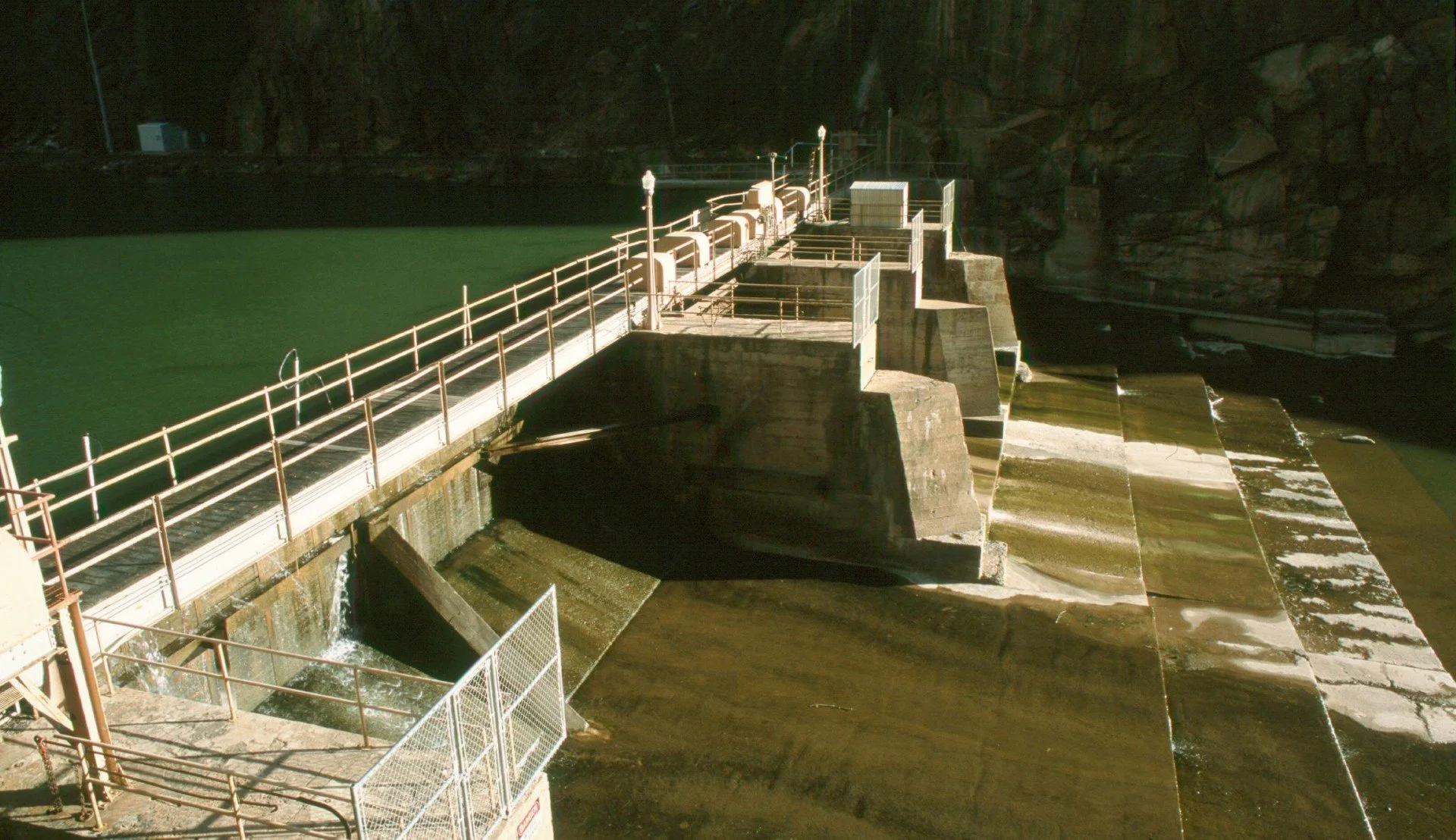
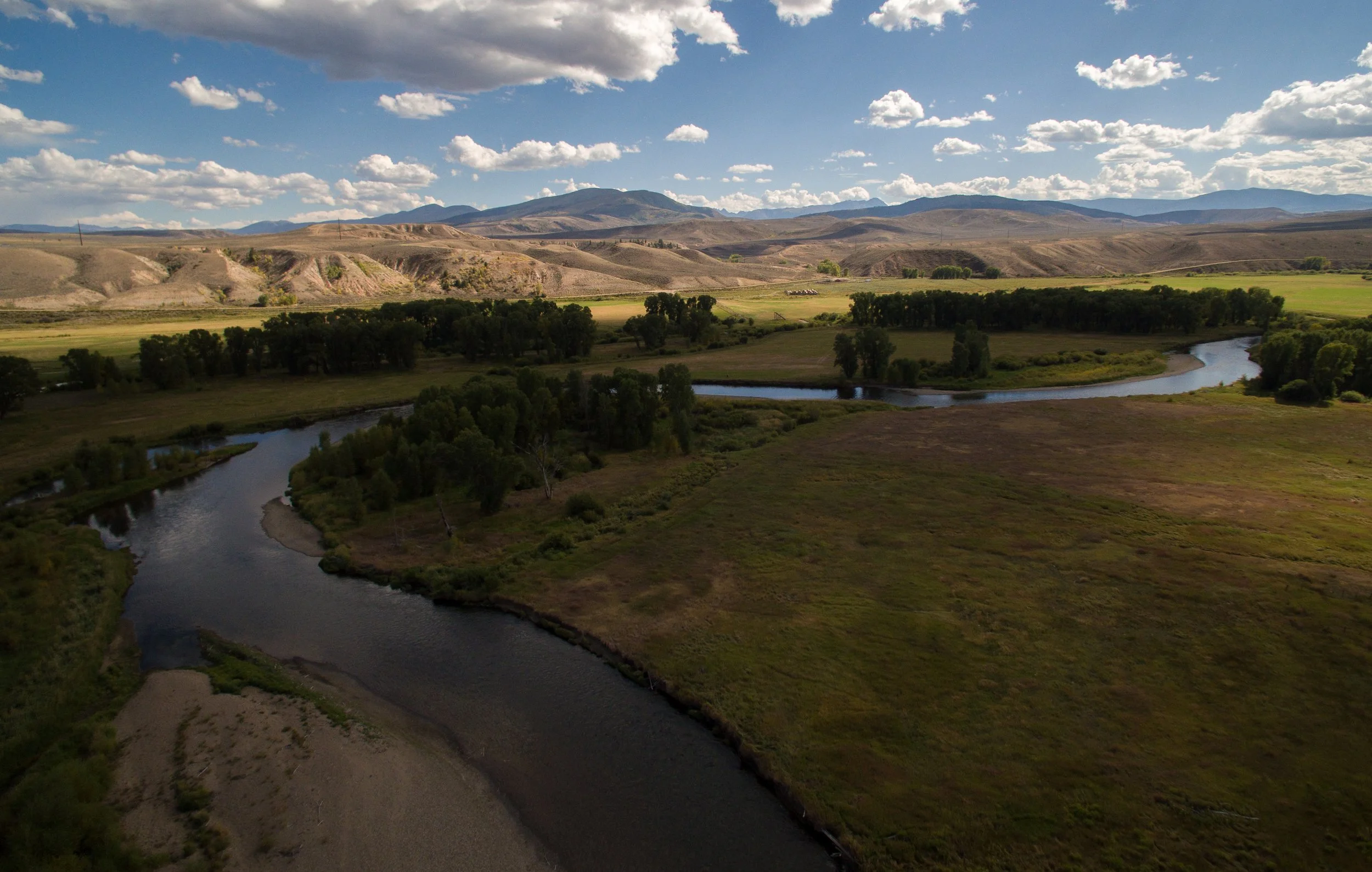
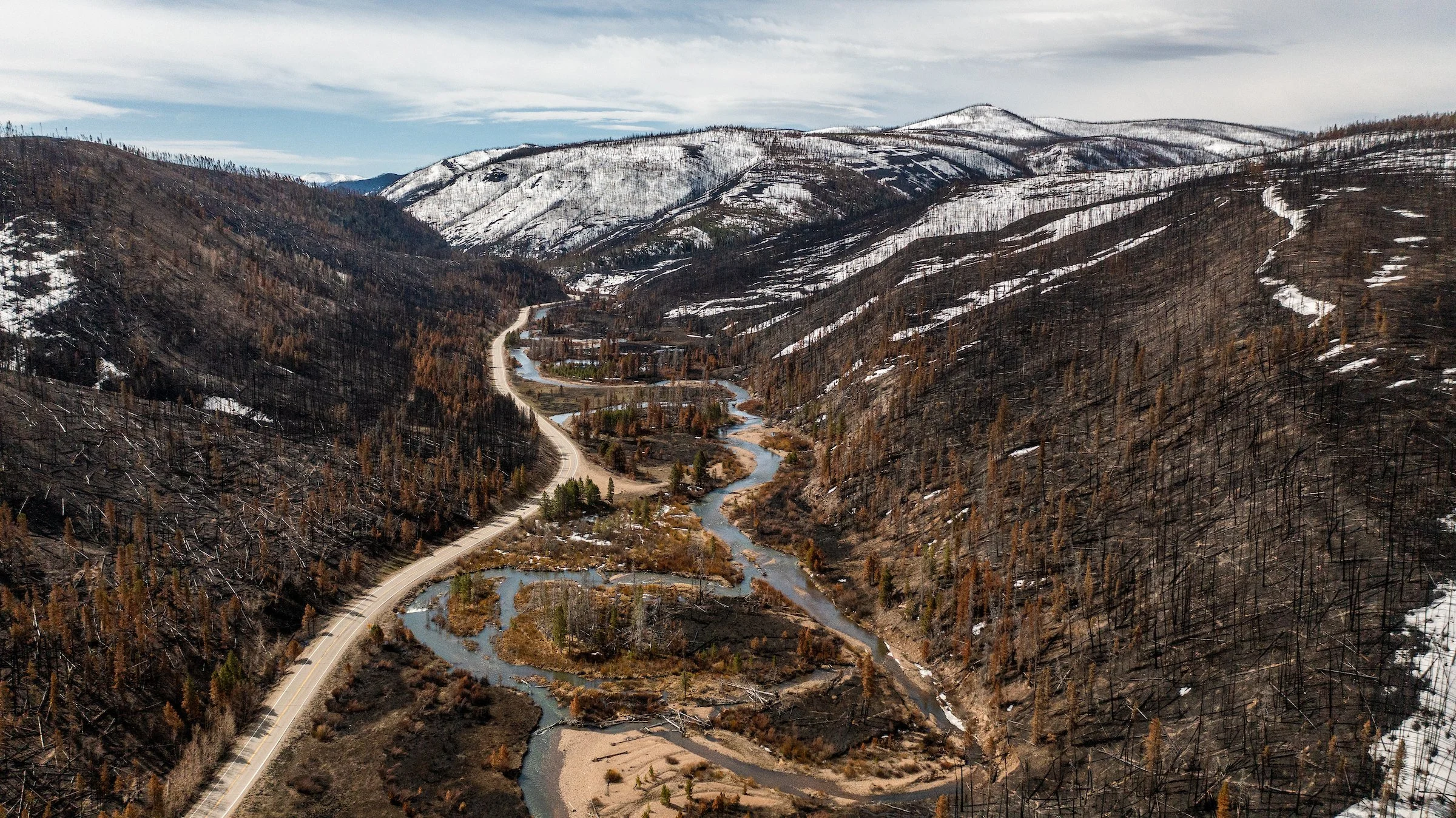

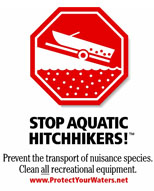 These species can cause considerable damage to water infrastructure, lakes, rivers, and wildlife.
As anglers, it is important for us to recognize that the “Clean, Drain, and Dry” slogan doesn’t just apply to speedboats and Skidoos. We spend considerable time in and near bodies of water in this state, and that means we need to be very careful how we clean and dry our own equipment. Fortunately, every time we head to the river or sit in the blind, we don’t have to wait in line to get cleared by a CPW inspector, or carry around white tags that confirm our wading boots are clean. But with this freedom comes great responsibility.
These species can cause considerable damage to water infrastructure, lakes, rivers, and wildlife.
As anglers, it is important for us to recognize that the “Clean, Drain, and Dry” slogan doesn’t just apply to speedboats and Skidoos. We spend considerable time in and near bodies of water in this state, and that means we need to be very careful how we clean and dry our own equipment. Fortunately, every time we head to the river or sit in the blind, we don’t have to wait in line to get cleared by a CPW inspector, or carry around white tags that confirm our wading boots are clean. But with this freedom comes great responsibility.
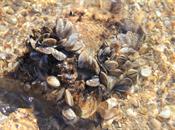

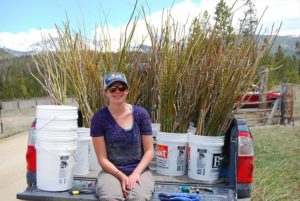 What is your favorite activity or project that you have done with TU?
What is your favorite activity or project that you have done with TU?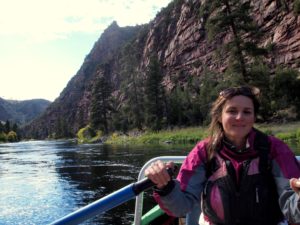
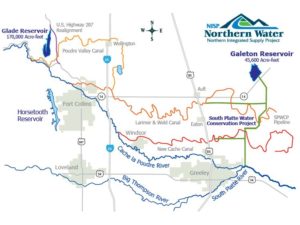 The
The 
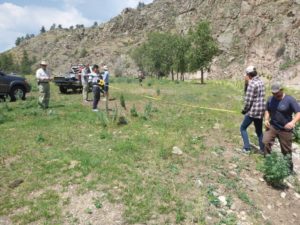 A capstone activity encompasses a half-day restoration project on a local stream, designed and supervised by the Wildlands Restoration Volunteers organization. As campers better understand the relationship of trout as an indicator of water quality, they gain appreciation for the need to protect our coldwater streams - while also discovering that fly fishing can become an enjoyable, lifelong pastime.
A capstone activity encompasses a half-day restoration project on a local stream, designed and supervised by the Wildlands Restoration Volunteers organization. As campers better understand the relationship of trout as an indicator of water quality, they gain appreciation for the need to protect our coldwater streams - while also discovering that fly fishing can become an enjoyable, lifelong pastime.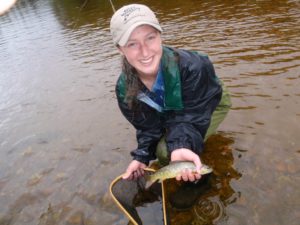 Beyond a nominal $30.00 acceptance fee, funding for camp is provided by generous corporate and individual chapter member support. Additionally, all fishing attire and equipment is provided by RMFC-TU. Camp activities occur on the Poudre River, Big Thompson River headwaters in Rocky Mountain National Park, private ponds and Fort Collins Parks. Indoor classes are held in corporate and community conference rooms.
Beyond a nominal $30.00 acceptance fee, funding for camp is provided by generous corporate and individual chapter member support. Additionally, all fishing attire and equipment is provided by RMFC-TU. Camp activities occur on the Poudre River, Big Thompson River headwaters in Rocky Mountain National Park, private ponds and Fort Collins Parks. Indoor classes are held in corporate and community conference rooms.


 Now organized by Clint Crookshanks, the Rodeo is held over the final weekend of July. Participants gather on Thursday night in Glenwood Springs to meet up and get their measuring troughs (to document the size of each of the up to 16 fish scored). On Friday, the teams spread out - fishing on public water only - to tackle the first four rivers: the Fryingpan, Roaring Fork, Crystal, and Colorado. On Saturday, action moves to the Gunnison basin with teams fishing the East, Gunnison, and Taylor Rivers as well as Spring Creek. If an angler misses one of the Friday rivers, they can make it up with the Slate as a fifth Saturday river.
Now organized by Clint Crookshanks, the Rodeo is held over the final weekend of July. Participants gather on Thursday night in Glenwood Springs to meet up and get their measuring troughs (to document the size of each of the up to 16 fish scored). On Friday, the teams spread out - fishing on public water only - to tackle the first four rivers: the Fryingpan, Roaring Fork, Crystal, and Colorado. On Saturday, action moves to the Gunnison basin with teams fishing the East, Gunnison, and Taylor Rivers as well as Spring Creek. If an angler misses one of the Friday rivers, they can make it up with the Slate as a fifth Saturday river. We stayed in Basalt and made it to the dam before sunrise. Only to find a line of folks already in place waiting to cast into the pool immediately below the dam. We went a bit downstream, crossed to the opposite side, and fished the far bank. Dustin landed his fish first - not a trophy, but a nice 15" brown trout. We relocated below the bridge where I landed a 12"er and was thus able to record my first Rodeo trout on the Fryingpan. One river down - and not even 9 am. We were flying high!
We stayed in Basalt and made it to the dam before sunrise. Only to find a line of folks already in place waiting to cast into the pool immediately below the dam. We went a bit downstream, crossed to the opposite side, and fished the far bank. Dustin landed his fish first - not a trophy, but a nice 15" brown trout. We relocated below the bridge where I landed a 12"er and was thus able to record my first Rodeo trout on the Fryingpan. One river down - and not even 9 am. We were flying high! Colorado while Dustin continued to hit the Roaring Fork - but close enough where we could both get to the other with the measuring trough if we landed something. We struck out there. Crossing the bridge and dropping to the opposite bank, Dustin caught our best fish of the weekend - an 18" whitefish. I continued to get nothing.
Colorado while Dustin continued to hit the Roaring Fork - but close enough where we could both get to the other with the measuring trough if we landed something. We struck out there. Crossing the bridge and dropping to the opposite bank, Dustin caught our best fish of the weekend - an 18" whitefish. I continued to get nothing. Saturday started with high hopes to get fish from five rivers and still complete our rodeo. But the luck that had been with me on the Colorado left me on the Gunnison. Fishing below the town of Gunnison in the morning, I hooked - and lost - a series of three fish. Dustin was also having no luck, so we decided a change of scenery was in order. We headed up to the Taylor River where we found a beautiful pool - complete with a break in the riverside trees to allow for a clear backcast - and both hooked into rising browns to score our Taylor River fish. Four rivers down - four to go.
Saturday started with high hopes to get fish from five rivers and still complete our rodeo. But the luck that had been with me on the Colorado left me on the Gunnison. Fishing below the town of Gunnison in the morning, I hooked - and lost - a series of three fish. Dustin was also having no luck, so we decided a change of scenery was in order. We headed up to the Taylor River where we found a beautiful pool - complete with a break in the riverside trees to allow for a clear backcast - and both hooked into rising browns to score our Taylor River fish. Four rivers down - four to go. headed over to the Roaring Judy Hatchery to fish the public reach of the East River there. Fishing around a tree with branches hanging over the river by where the hatchery springs flow out into the East, Dustin landed another brown trout. We swapped rigs, figuring that his set up would give me the best chance to land one as well. Of course, Dustin proceeded to hook another fish on my rod and fly ... another lesson in humility for me.
headed over to the Roaring Judy Hatchery to fish the public reach of the East River there. Fishing around a tree with branches hanging over the river by where the hatchery springs flow out into the East, Dustin landed another brown trout. We swapped rigs, figuring that his set up would give me the best chance to land one as well. Of course, Dustin proceeded to hook another fish on my rod and fly ... another lesson in humility for me. We finished the evening fishing the Gunnison at its source - the confluence of the East and Taylor Rivers - as a light rain continued to fall. While we hadn't succeeded - indeed, hadn't even come particularly close - it had been a great experience to fish together at so many different, beautiful spots in such a short time. We called it a day and headed over to the Almont Resort for dinner.
We finished the evening fishing the Gunnison at its source - the confluence of the East and Taylor Rivers - as a light rain continued to fall. While we hadn't succeeded - indeed, hadn't even come particularly close - it had been a great experience to fish together at so many different, beautiful spots in such a short time. We called it a day and headed over to the Almont Resort for dinner. Slate to replace the Crystal, which they like us had missed on Friday). Those well-earned smiles on their faces come with one year's worth of bragging rights - at least until the 2018 Rodeo. Overall, 12 of the 30 teams completed all 8 rivers. For the 10th anniversary year, there was also the option to complete 10 rivers (adding Brush Creek and Cement Creek on Friday and Saturday respectively). Three teams actually completed all 10 rivers - including the overall winners, the Triple Haulin' Nymphers (Dan Lundahl and Earl Hecker), who scored 257.3 inches on the 8 rivers (that's an average fish length of 16 inches!) plus another 51.8 inches on the two bonus rivers.
Slate to replace the Crystal, which they like us had missed on Friday). Those well-earned smiles on their faces come with one year's worth of bragging rights - at least until the 2018 Rodeo. Overall, 12 of the 30 teams completed all 8 rivers. For the 10th anniversary year, there was also the option to complete 10 rivers (adding Brush Creek and Cement Creek on Friday and Saturday respectively). Three teams actually completed all 10 rivers - including the overall winners, the Triple Haulin' Nymphers (Dan Lundahl and Earl Hecker), who scored 257.3 inches on the 8 rivers (that's an average fish length of 16 inches!) plus another 51.8 inches on the two bonus rivers.
